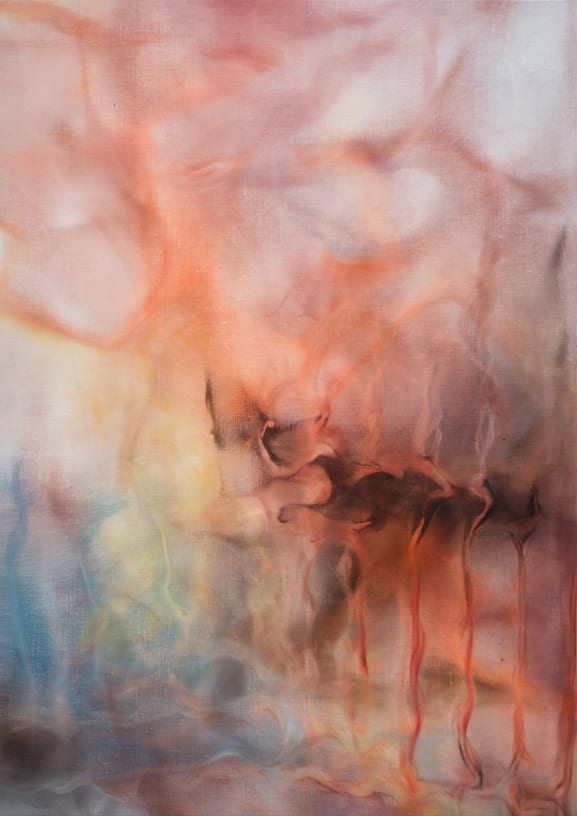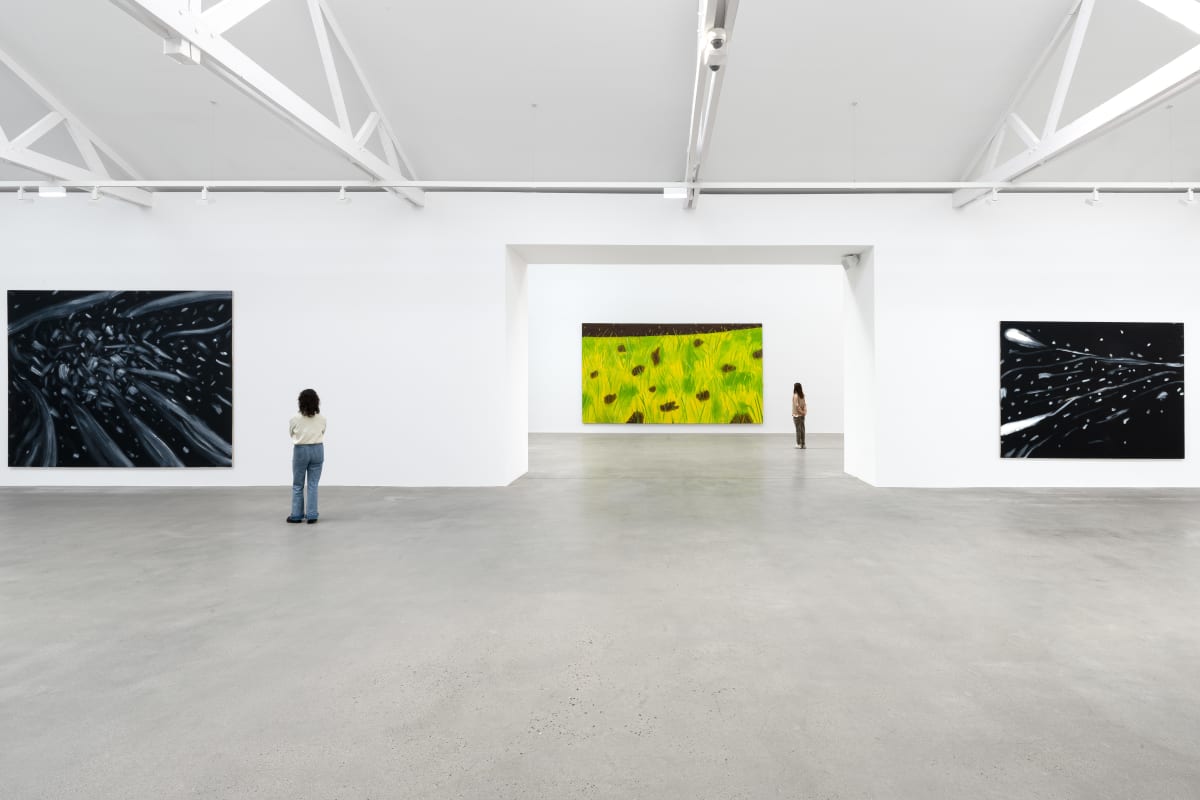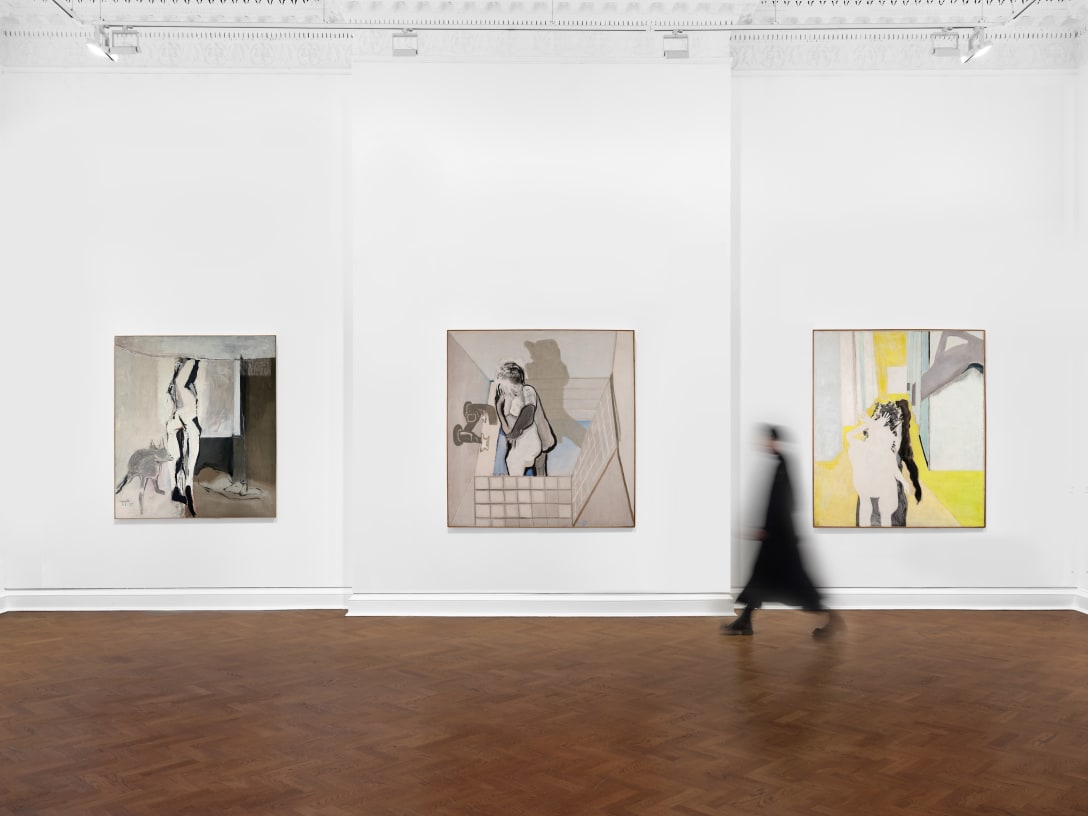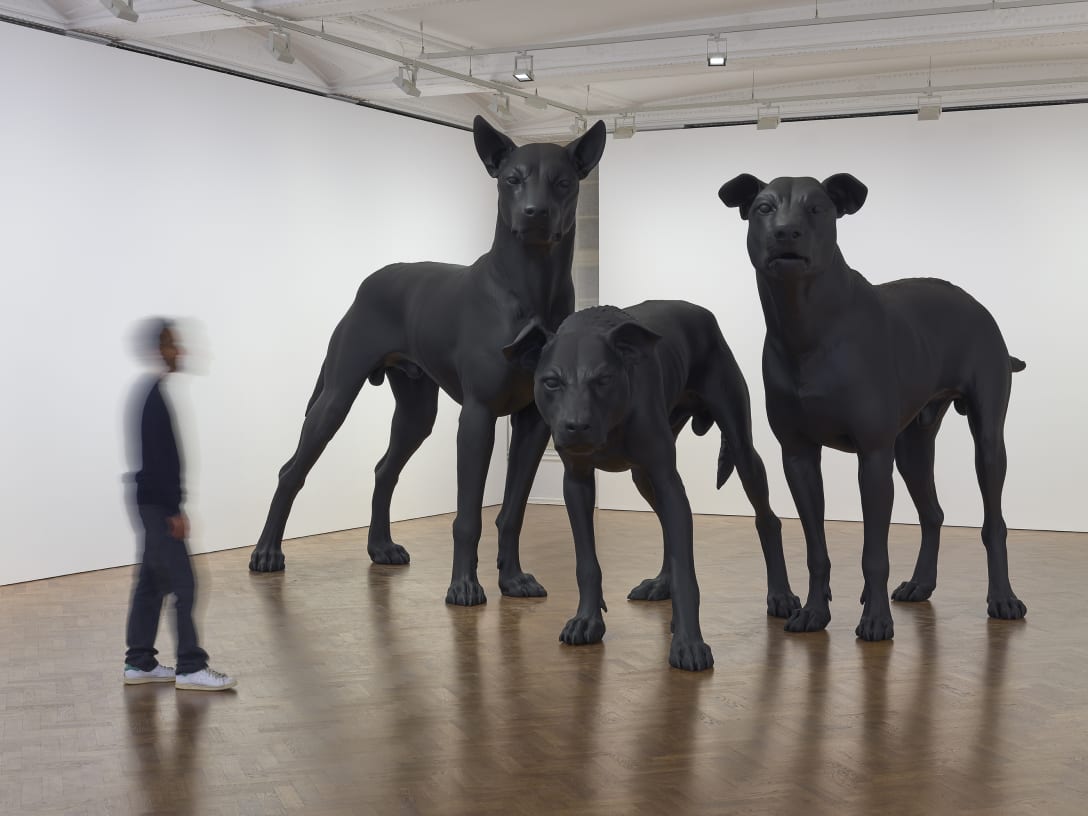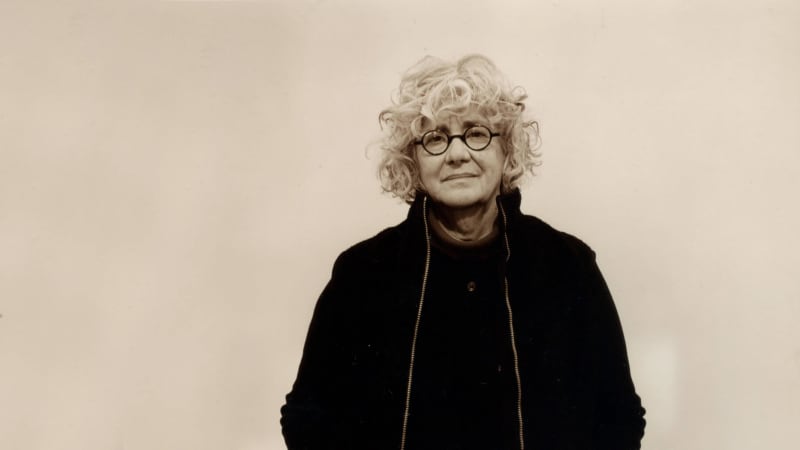Sean Scully: A Wound in a Dance with Love . (This link opens in a new tab).
By Raphy Sarkissian
I think that art is a wound in a dance with love.
And if the wound and the love are the same size,
then they can dance well.1
—Sean Scully, “What Art Is” (June 2004)
A leading champion of contemporary artmaking, Sean Scully has come to project his image of an artist as a formalist conundrum, as intimated by the above metaphor that exudes a sense of pathos. While The Shape of Ideas, a fifty-year retrospective recently mounted at the Modern Art Museum of Fort Worth and subsequently at the Philadelphia Museum of Art, was comprehensive in relation to the consummate, arguably abstract and gestural execution of pulsating grid-like configurations, a number of traveling retrospectives of Scully on the other side of the Atlantic have unraveled a pioneering practice that is inclusive of probing figurative investigations, in addition to a singular practice of sculpture. With an elegiac title, A Wound in a Dance with Love, a compendious exhibition currently on view at Museo d’Arte Moderna di Bologna (MAMbo) is a case in point.
Deftly curated by Lorenzo Balbi, A Wound in a Dance with Love intriguingly articulates confrontations between representation and nonrepresentation, where Scully’s considerably elastic oeuvre is circuitously presented as a counterpart to Giorgio Morandi’s doubling of figuration and abstraction, itself a practice reminiscent of Paul Cézanne’s spectral apples. While over sixty works by Scully are on view in Sala delle Ciminiere, located on the ground floor of the museum, Cactus, a 1964 still life, is curiously hung as a prelude in the entryway of the Museo Morandi, located on the second floor of MAMbo. This peculiarity runs parallel to Scully’s piercing essay titled “Giorgio Morandi: Resistance and Persistence”—containing a section titled “The Act of Looking with Cézanne”—written in May 2005 in Formentera, initially published in Inner and recently republished in the catalogue of this exhibition.
Regarding Cactus, painted around the age of nineteen, Scully has stated, “I find the cactus to be an indestructible and admirable plant. As a metaphor it mirrors perfectly the life of a painter. It can survive drought and it flowers when it is ready.”2 Such an idea in fact frames Scully’s reading of Morandi’s work, where the Italian artist’s sole means of escape from the Fascist regime was through his subversion against the abstract, avant-garde grain of his time, constructing ethereal figurative imagery that incarnates a sense of patience and diffidence.3
Indeed, the book titled Inner, a collection of Scully’s writings and selected interviews, touches upon concepts regarding life, culture, and painting via Cimabue, Friedrich Nietzsche, Stéphane Mallarmé, Georges Seurat, Piet Mondrian, Jackson Pollock, Willem de Kooning, Mark Rothko, Robert Ryman, Clyfford Still, Barnett Newman, Lucian Freud, Arthur C. Danto, and Jürgen Habermas, among others, manifesting knowledge, rhetoric, wit and self-investigation. These writings, while at times not directly related to his own practice, unquestionably refashion the way we perceive his oeuvre—they may even reroute the ways in which we fathom abstraction. Though rhetorically rich, the text brilliantly eludes the emblematic turgidity of art theory. With a dozen of such texts staged within museum vitrines, this exhibit presents the artist’s ideas on works of art on par with his paintings, works on paper and sculpture. As Scully’s writings constantly shed light on the possibilities of meaning within his work and enrich our interpretation of them, this brief review of the exhibition brings a few works on view at MAMbo in touch with his written words.
Reflecting on life, time and the ontology of art, Scully has noted, “An idea is more powerful than an object, because objects decay and ideas get repeated. Why do I make objects? Because objects decay. And as they decay, they strangely gather more power in the form of pathos. With paintings this is especially true. A great painting seems to gain power as it ages. It has a strangely interactive relationship with time. It looks older, but it looks better. Not like us. But made by us.”4 This handwritten text, titled Idea, is displayed as a facsimile of a note written in Mooseurach on September 16, 2006.
The notes titled Fold (2010) and Fold Folding (2019), also showcased in the retrospective, poetically interrelate sheets, blankets and rugs to the concept of folding and unfolding, as if the sentences of Scully were springboards to Gilles Deleuze’s hermetic strains of thought in The Fold: Leibniz and the Baroque, a theoretical book on philosophy and art based upon a reformulation of the notion of the Leibnizian Baroque as a fold with the capacity to unfurl to infinity.5 Regarding the concept of the fold, Scully’s sentences proclaim artistic culture, to me, is like a huge rug that is constantly folded and unfolded by us. Every time it’s turned over, turned out, unfolded: it shows something new or something overlooked that now seems new … Every time it is refolded it grows new secrets, new wonders. As a new point of view, a new attitude, the rebirth of an old attitude with new form or color, the rebirth of an old form with a new attitude: reveals endless regeneration. … This is why the idea of folding, unfolding is so important to me. This is why I have used the title in various ways. Folding in, Folding out.”6
Drawn in gouache and ink on cardstock and dated “5.5.68,” Scully’s two rectilinear grids that nonetheless curl and undulate predominantly in sensuous shades of coral pink, bear the same title: Untitled (Homage to Paul Klee). Deleuze cites Leibniz regarding Klee’s straight lines and curves by stating that there can never be “a straight line without curves intermingled.”7As Deleuze forwards his thinking through differential calculus, atomic theory, the history of logic and aesthetic theory, he reveals a poetic philosophy that revolves around the concepts of “folds,” “pleats of matter,” and “temporal modulation,” surprisingly resonating with the thoughts and works of Scully.
Presented partly chronologically and partly thematically, A Wound in a Dance with Love greets visitors through What Makes Us Two (2017) and Uninsideout (2018-2020), two large-scale polyptychs, each containing six insets. While in several ways these two works epitomize Scully’s severe pictorial vocabulary built upon the abstract grid, the joshing Gestaltian devices employed here, along with the application of paint with spray gun, pulverize the geometricized and orderly asceticism of both paintings. “I never abandoned geometry, but my work stopped being flat and gave up its search for geometrical perfection as Mondrian, for example, had done,” Scully has noted.8
Matissian, vivid colors define the felted horizontal modules of Opulent Ascension (2019), a monumental edifice that articulated the interior space of the basilica of San Giorgio Maggiore in Venice in 2019. Over ten meters tall, this structural model incorporates so many of the inherent properties of painting, sculpture, and architecture, only to separate them from these typologies as well: here the felt support acts as a plinth that itself acts as a towering architectural construction. Light, color, and space condition the mobile participant’s experience, where the work invites the subject through its entryway into a soaring spatial realm whose absent ceiling recalls the oculus of the Pantheon in Rome. At once sober with its Minimalist properties and flirting with a Pop-art sensibility of buoyant coloration, Opulent Ascension functions as a point of focus to the MAMbo retrospective, as the utmost embodiment of the duality of matter and space, body and mind, corporeality and opticality, interweaving such lexical polarities, as if to overturn their semantic reductiveness.
Backcloth (1970), Fort #1 (1978), The Bather (1983), Empty Heart (1987), Mariana (1991), Long Light (1997), Two Windows Grey Diptych (2000), Wall of Light Zacatecas (2010), Aix Wall 4 (2021): these elating paintings of Scully are systematic inflections of gridded armatures, whereby form is defined through pictorial possibilities of vertical and horizontal axes and bands that unveil themselves in a state of flux over the course of four decades. These periodically shifting modulations of geometric fields range from a strictly linear syntax to a highly painterly one, from mirroring a full Cartesian coordinate system to its very pictorial fragmentation. The simultaneity of geometry and gestural expressiveness have come to characterize Scully’s visual syntax. And yet their titles seem to insist on an expansion of their semiological possibilities. Whereas each of these works represents a given stylistic phase of Scully’s career arc, the triangularity of abstraction, non-abstraction, and poetic titles invites us to reconsider and expand a given work’s interpretive possibilities. Undoubtedly, the meaning of such works can also be grasped through the artist’s own words regarding abstraction. In his brief statement “Nothing Is Abstract,” written in 2006, Scully ponders: “People tend to think of abstraction as abstract. But nothing is abstract: it’s still a self portrait. A portrait of one’s condition. I took out the vertical, which was my column and my architecture, and what I was left with was the horizon. And so I could begin my journey along it.”9 In 1999, Scully would begin employing the term “landline” in many of his paintings comprising of painterly horizontal bands, a visual device that echoes the formalist languages of Mark Rothko and Agnes Martin while reformulating and expanding the possibilities of abstraction.
Six large-scale figurative paintings on view, from the “Madonna” series, were executed in 2018 and 2019. Depicting a child on a seashore overseen by a parent, these images emanate pictorial discourses between abstraction and figuration, imploding the stability of such parameters as form, content, figure, ground, resemblance, abstraction, age, gender, presentation, representation, sense, and nonsense. Through rhythmic and chromatic improvisation that entertains our sensual pleasure of experiencing newly defined pictorial possibilities, this series addresses the modi operandi of vision and picture-making. This Madonna series also demonstrates the painter’s return to partial figuration, as evidenced through a dozen oil-pastel-on-paper works from the mid-sixties, including Three Women Bearing Arms I, Untitled (Seated Figure), and Man in Chair I, all dated 1966–67. In these drawings, the human figure is suspended between mimesis and non-mimesis, addressing the phenomenological parameters of seeing in relation to its representation, the mapping of the temporality of visual perception to the nontemporal attribute of the gestural mark. The coloristic traces upon the surfaces of these pastels act as seemingly autonomous marks that nonetheless collaborate in the formation of partly recognizable imagery. As images, these pastels invite us to consider them as references to the phenomenon of the shifting ways in which the world presents itself to the subject’s perception. These portraits of Scully implicitly expand the painterly practices of Morandi and Cézanne, whose outputs are investigations of the discrepancies between the historical ideality and reality of vision, between the visuality of the old masters and that of the modernists.
Chromatically vivid and conceptually charged, this retrospective of Scully outstandingly encapsulates a portrait of the artist’s creative route, a portrait that is indeed an exemplary revelation of the human impulse in reasoning, writing, and artmaking. As Scully has self-critically noted, “Art probably comes out of darkness, or loss, or difficulty, strangeness, discomfort, and it’s a way of achieving a kind of redemption, or manifesting something that, in a way, repairs damage.”10 A Wound in a Dance with Love can thus be grasped as a summation of Scully’s continual exercises in overturning the dichotomy of abstraction and illusion, a Promethean if not Sisyphean task that incorporates “wound,” “dance,” and “love” as psychic constituents of the artmaking process.
1. Sean Scully, “What Art Is” (2004), in Inner: The Collected Writings and Selected Interview of Sean Scully, eds. Kelly Grovier and Faye Fleming (Berlin: Hatje Cantz, 2016), p. 142.
2. Scully, “Cactus” (2004), in Inner, p. 152.
3. Scully, “Giorgio Morandi: Resistance and Persistence” (2005), in Inner, pp. 171-76, here p. 172.
4. Scully, “Idea” (2006), in Inner, p. 202.
5. Gilles Deleuze, The Fold: Leibniz and the Baroque, trans. Tom Conley (London and New York: Continuum, 2006).
6. Scully, “Fold” (2010), in Inner, p. 268.
7. Deleuze, p. 14.
8. Scully, “Synthesis” (2003), in Inner, p. 123.
9. Scully, “Nothing Is Abstract” (2006), in Inner, p. 192.
10. Scully, in “Lorenzo Balbi and Sean Scully: A Conversation,” in A Wound in a Dance with Love (Bologna: Museo d’Arte Moderna di Bologna, 2022), pp. 10-35, here p. 31.











